|
Vanessa and I were just finishing up some new discoveries in the downlines of Stephen Farr and Sarah Bennett. It took me a few days to enter all the people, changes and sources. I've added probably 80 people give or take to his son's line, Elias Farr and Mary Davison, to which we discovered that we had the wrong Mary for his wife. We originally had Mary Davidson who is different than Mary Davison. Mary Davidson married a Nichols.
We have also connected two Farr lines that were in my file but no connection to the rest of the file. This also added more additions and discoveries in the Farr lines. In total from the above and this, I have added well over a hundred people to our file. I have submitted about 96 ordinances for Temple work to be done. Needless to say, I didn't get much done with Gardner and Rolfe lines on the chart but did get a big mess straightened out on FS that was confusing my research. I can't tell you how amazing Vanessa Herring has been to sniff out any Farr annomilies in the records of FS and in my file due to previous lack of information. She has been a God send. I don't think she is a member of the Church but she seems to be guided in this work. She has also found spouses and children that we were missing after I completed those lines. I have equally been able to help her with her Walker line which is how we crossed paths. At first she didn't dare mess with FS but I have gotten her to learn it and feel comfortable with making changes in it.
0 Comments
I have finished with Johnson, Wiswall, Munter and Deane. I'm currently working on Gardner and Rolfe.
I have submitted 33 ordinances to the temple system. Vanessa Herring discovered another son of Alpheus and Sybil Farr. Winslow Farr Sr. is the brother of Sybil Farr. The new son is Zelotas b. 4 Apr 1824 in Waterford, Caledonia, Vermont. I have added all of the downlines I can find of Zelotas Farr and added them to our website last week. Vanessa will add Zelotas to FS and then I will add the downlines( or maybe I already did?, I'm getting older lol). Vanessa also sent me a theory of where Ephraim Farr's line connects into our tree. I will be looking more closely at this possible connection and report on it if it pans out. Zelotas Farr's downline for now. Tim Farr Report June 2023
Brent Farr Robertson called me the other day and said that someone contacted him because a person had merged Olive Hovey Freeman with a Sarah. No sources were used of course. The contact downloaded all the pictures, docs , etc in case while restoring Olive's information, it would be lost. He wanted permission to put my name on it for whatever reason (he thought it would carry more weight. haha) I looked up the Sarah and found all of Olive's materials linked to Sarah. The only way I know of deleting this info from Sarah is to email the contributors and have them remove it. Maybe Dave Rencher could check this out? I know that it was a very lengthy process for me to re-do our English Farr lines after someone destroyed it. FamilySearch is much better now than it was but this is a real problem to those of us that care and have to fix these problems. This is why I always teach people that they need to keep a copy of what they do on their own computer with Genealogy software. Everyone tries to argue that they can just do it on FS, and we know from experience that this is not true. I finished the Freeman line and also unlinked the last two generations on FS because of no Preponderance of evidence. I'm working on the Presbury line and left Stephen and the two generations past Stephen Presbury because I believe that a preponderance has been established with the following: https://www.wikitree.com/wiki/Presbury-12#_note-GenDict568: Parentage Charles Edward Banks, the author of "The History of Martha's Vineyard," concluded that this profile's Stephen Presbury was "probably" the son of John Presbury,[1] a shoemaker from Sandwich, Plymouth County, who removed to Saco, Province of Maine before 1665.[2] Banks's reasoning was that "John [Presbury of Saco] died in that Province before Nov. 3, 1684, leaving three sons, of whom one was Stephen, and the name is so unusual and without recurrence at that period, that we can assume the relationship fairly established."[1] Banks's conclusion has been disputed based largely on two arguments (1) a lack of evidence that Stephen of Saco was the same person as Stephen of Martha's Vineyard and (2) an apparent inconsistency between (i) the fact that Stephen's gravestone states that he died on May 17, 1730 in his 58th year, which would mean that Stephen had already turned 57 but not yet turned 58 and was born between May 17, 1672 and May 17, 1673, and (ii) the fact that Stephen of Saco witnessed a "deed" in Kittery on April 8, 1686, the suggestion being that he must have been at least 21 to witness the deed and was therefore born on or before April 8, 1665.[3] Despite these arguments (of which Banks was well aware), the theory that Stephen of Saco and Stephen of Martha's Vineyard were the same person remains reasonably plausible. The plausibility of the theory is based on the following reasoning: ∎There is no evidence of Stephen of Saco after 1686 or evidence of Stephen of Martha's Vineyard prior to 1694. This is consistent with them being the same person and having moved from Saco to Martha's Vineyard sometime between 1686 and 1694. Evidence that a Stephen of Saco and Stephen of Martha's Vineyard both existed at the same time would disprove the theory. ∎There are no records of another Stephen Presbury in New England at the time that could have been either Stephen of Saco or Stephen of Martha's Vineyard. ∎It is reasonably plausible that Stephen of Saco's father was the son of John Presbury of Sandwich. If so, then it would be natural for him to have moved back to the Cape Cod area. In addition, in that case, his parents would have been John Presbury and, most probably, Dorcas Bessey, which would explain why Stephen named children John and Dorcas. ∎The apparent inconsistency between Stephen of Saco's witnessing a "deed" in 1686 and Stephen of Martha's Vineyard's gravestone indicating he was born in 1671 or 1672 can be explained in several ways. First, while a person needed to be 21 to enter into a deed, they only needed to be 14 to witness a deed,[4] which means that someone born in 1672 could witness a deed in 1686. Second, what Stephen of Saco witnessed in 1686 was actually not a deed, but the physical act of taking possession of the previously deeded property,[5] which could well have had even lesser legal requirements. Third, while gravestones are highly reliable for date of death, it is not uncommon for them to be inaccurate regarding the age of the deceased. For example, as Banks noted, the gravestone for Stephen's wife, Deborah states that she died in her 73d year, whereas her Sandwich birth record indicates that she was actually in her 74d year. Therefore it is quite possible that Stephen was older at his time of death than was indicated on his gravestone. ∎Stephen of Martha's Vineyard had a daughter named Dorcas, which was probably the name of Stephen of Saco's mother. In sum, while the evidence supporting the theory that this profile's Stephen Presbury was the son of John Presbury of Saco is circumstantial, there is no evidence that disproves it and it remains reasonably plausible. In the absence of a more plausible suggested parentage, it is appropriate to list John Presbury of Saco as the "uncertain" father of Stephen. If John Presbury of Saco was not the father of this profile's Stephen Presbury, it's likely that Stephen was still the son of Dorcas Bessey, that Dorcas had married a Presbury other than John Presbury of Saco, and that Stephen was the grandson of John Presbury of Sandwich, based on the following factors: ∎There is solid evidence that Dorcas Bessey married a Presbury,[6] ∎Stephen named one of his daughters Dorcas ∎Stephen married the granddaughter of Stephen Skiffe, who was a friend of Dorcas Bessey's parents and named executor of both of their wills[7] ∎John Presbury was the only known Presbury in Sandwich and was therefore almost certainly the father of the man that Dorcas married and the grandfather of Stephen ∎Date of Birth: Several pieces of evidence are relevant to determining Stephen's date of birth: ∎Stephen's gravestone that says that he died on May 17, 1730 in his 58th year. This would mean that Stephen died after he had already turned 57 but not yet turned 58 and was thus born between May 17, 1672 and May 17, 1673. As discussed above, however, while dates of death on gravestones are highly reliable, age at death are less so. ∎Stephen's wife, Deborah Skiff, was born on July 14, 1668. it was probably most common for a first-time husband to be somewhat older than his wife, with 2 years old probably being the median and 0-5 the normal range. It was rather unusual for the husband to be younger than his first wife and very unusual for him to be more than a year or so younger. Based solely on Deborah's date of birth, one would expect that Stephen would have been born sometime in 1663-1668. ∎The birth record for his first known child, Mary, which shows she was born on August 28, 1694. Assuming she was not conceived out of wedlock, this suggests that Stephen and Deborah were probably married sometime in 1693. The most common age of first marriage for males at the time was about 23, with a normal range from 21-27. It was very unusual for a man to get marriage before 21 since it would be expected that they would have their own household, which was difficult to achieve for both legal and practical reasons. Based solely of Mary's date of birth, one would expect that Stephen would have been born sometime in 1666-1672. The above evidence yields inconsistent estimates of Stephen's date of birth. In particular, either his age at death on his gravestone was incorrect or, at the young age of 21, he married a woman who was about 4 years older than him. It is perhaps most likely that Stephen married an older woman and was born in either in May-August 1672 (consistent with his age at death on his gravestone) or sometime in May 1671 to May 1672 (with his age at death on his gravestone off by a year, the same as his wife's), but it is also reasonably plausible that his age at death on his gravestone was more inaccurate and that, as Banks suggested, he was born as early as 1666. Place of Birth Based on the theory that Stephen was the son of John Presbury of Saco, he would have been born in Saco, Province of Maine. Early Life in Maine Again, assuming the correctness of the theory that Stephen was the son of John Presbury of Saco, Stephen's father died sometime before April 1679[8] and in June 1679 Major Francis Hooke was appointed as guardian of Stephen and his brothers William and Nathan.[9][2] While his older brother Nathan was apprenticed first to Major Pendleton, then to Joseph Cross, and finally to Nicholas Morey,[9] it seems likely that Stephen stayed with Francis Hooke until at least 1686 when he witnessed the delivery land by Hooke.[5] Emigration from Maine to Sandwich In response to King Phillip's War and King William's War, many settlers left Maine during the late 1670s and thereafter and returned to Massachusetts.[10] In the early 1690s, John Presbury of Saco's sons William, Nathan and Stephen all emigrated from Maine: William settled in Beverley;[11] Nathan was probably first in adjoining Salem (where is wife lived) before moving to Boston;[12] while Stephen seems to have moved back to his parent's hometown of Sandwich. Marriage Stephen Presbury married Deborah Skiff of Sandwich,[13] probably in 1693.[14] Since Deborah's family lived in Sandwich and the births of Stephen and Deborah's first two children were recorded there, it is reasonable to assume that they were married in Sandwich and initially settled there. Martha's Vineyard By 1704, Stephen and his family were living on Martha's Vineyard. A deed dated that year refers to Stephen as "of Chilmark."[1] Stephen was later a landowner in three towns on Martha's Vineyard and had his homestead at the head of the Lagoon near the Homes Hole.[1] Children Stephen and Deborah had the following children: Mary, b. August 28, 1694 in Sandwich,[15] m. January 1712/3 Thomas West Keturah, b. April 28, 1696 in Sandwich[15] Dorcas, b. probably about 1698 presumably either in Sandwich or on Martha's Vineyard, m. Elisha Wollen John, b. 1700 presumably either in Sandwich or on Martha's Vineyard, m. about 1719 Abigail Cottle, d. September 20, 1728 Abigail, b. probably about 1703 presumably either in Sandwich or on Martha's Vineyard, m. Ebenezer Perry of Sandwich Drusilla, b. 1708, m. Thomas West Content, b. 1711 presumably on Martha's Vineyard, m. September 5, 1735 Stephen Luce Sarah, b. 1713 presumably on Martha's Vineyard, m. February 18, 1731 Timothy Luce Death Stephen died [in TIsbury] on May 17, 1730. The diary entry of Rev. William Holmes of Chilmark for May 24, 1730 recorded his earlier death: "Mr. Presbury of Old town died last Lord's day."[16] His gravestone can be found in South End Cemetery in Tisbury. The inscription reads: Here lieth ye Body of Stephen Presbury died May ye 17th 1730 in ye 58th Year of his age[17] Will Set forth below is a transcription of Stephen Presbury's will, made on April 6, 1730: The Last Will & Testament of Stephen Presbury of Edgartown in Dukes County in the Province of the Massachusetts Bay in New England &c [et cetera]. first: I Give & bequeath my Immortal Soul into the hands of God that gave it, & after my Death I bequeath my Body to be decently buried, and as to my Worldly Estate -- first: I do give & bequeath unto my Grandaughter Moriah Pres==bury [== represents a line break] ye only surviving child of my son John Presbury Deceased but five shillings to be paid out of my Estate, I having already given to my D[ear] sone John Presbury in his life time his part or Portion of my Estate. Secondly: I do give & bequeath unto my Loving wife Deborah Presbury the whole & sole Improvement of all the Residue & Remainder of my whole Estate both Real & Personal & after her Deceas do give & bequeath unto my two youngest Daughters viz Content & Sarah five pounds to be paid to Each of them out of the sd [said] Estate. & then 3ly: My Mind &Will is of all the Residue & Remainder of my Estate to be Equally Divided between my seven Daughters or their Lawfull Representatives, That is to say one seventh part there=[line break]=of unto ye Children or Representatives of my Daughter Mary Deceased one seventh part unto my Daughter Katurah one seventh Part unto my Daughter Dorcus, one seventh part unto my Daughter Abigail one seventh part unto my Daughter Drusilla, one seventh part unto my Daughter Content & the other seventh part unto my Daughter Sarah: 4th & lastly: I constitute & ordain my sd [said] wife Deborah Presbury to be my whole & sole Executrix to this my Last Will & Testament and In Witness & Confirmation hereof I have hereunto Put my hand & seal this Sixth Day of April Anno Domini 1730. Signed Sealed & Declared to be my Last Last Will & Presbury [lined out] Testament in the Presence of Zacheus Mayhew, Abner West, ye mark of Green / Pease Stephen Presbury {s} [seal] [Notarial acknowledgement omitted] [18] Sources 1. ↑ 1.0 1.1 1.2 1.3 1.4 Charles Edward Banks, "The History of Martha's Vineyard, Dukes County, Massachusetts, Volume II," George H. Dean, 1911, Annals of Tisbury, p 24 2. ↑ 2.0 2.1 2.2 Charles Edward Banks, "The History of Martha's Vineyard, Dukes County, Massachusetts, Volume III," p 410 3. ↑ 3.0 3.1 Letter dated October 1999 from R. Andrew Pierce to Tim Farr 4. ↑ 4.0 4.1 "Legal Age," Bob's Genealogy Filing Cabinet 5. ↑ 5.0 5.1 5.2 York Deeds, Book IV. Folio 134. Link to folio at hathitrust.org. 6. ↑ 6.0 6.1 Nathaniel B. Shurtleff, "Records of the Colony of New Plymouth in New England, Volume VIII, Miscellaneous Records, 1633-1689," William White, 1857, p 111 7. ↑ 7.0 7.1 Robert Charles Anderson, George F. Sanborn, Jr., and Melinde Lutz Sanborn, "The Great Migration, Immigrants to New England, 1634-1635, Vol 1, A-B," (Boston: New England Historic Genealogical Society, 1999, pp 266-270 8. ↑ See profile for John Presbury 9. ↑ 9.0 9.1 9.2 Sybil Noyes, Charles Thornton Libby, Walter Goodwin Davis, "Genealogical Dictionary of Maine and New Hampshire," Genealogical Publishing Co., Inc. 1979, p 568 10. ↑ 10.0 10.1 "King Phillip's War," wikipedia.com 11. ↑ See profile for William Presbury. 12. ↑ See profile for Nathan Presbury. 13. ↑ 13.0 13.1 Ancestry.com. U.S., New England Marriages Prior to 1700 (database on-line). Provo, UT, USA: Ancestry.com Operations Inc, 2012. 14. ↑ Their date of marriage is estimated based on the date of their first known child, Mary. 15. ↑ 15.0 15.1 15.2 Sandwich, Mass., Vital Records, Vol. XXIX, 1912, p 71 16. ↑ 16.0 16.1 Charles E. Banks, "Diary of Rev. William Homes of Chilmark, Martha's Vineyard, 1689-1746, New England Historical and Genealogical Register, April 1896, Vol 50, p 163 17. ↑ 17.0 17.1 Stephen Presbury (1672-1730) on Find A Grave: Memorial #8981774 Retrieved 24 January, 2018. 18. ↑ 18.0 18.1 Probate Records, 1690-1938 (Dukes County, Massachusetts); Author: Massachusetts. Probate Court (Dukes County); Probate Place: Dukes, Massachusetts See also: Roser, Susan E. Mayflower Births & Deaths. 1992. Volume 2. p. 332. Link to page at ancestry.com. We also have included Kezia Presbury as a child in Stephen Presbury's family in our own files but not on FS. Keziz Presbury is a proven granddaughter of Stephen Skiffe. NO proof that she was a daughter of Stephen Presbury and she probably wasn't. But her mother was likely the Deborah Skiffe daughter of Stephen Skiffe before she married Stephen Presbury. Some guy is writing notes on Stephen Presbury that keeping Stephen in this line is bad genealogy and fake. I don't agree. I feel that there is more than enough evidence to keep it on FS but not include Kezia in the family on FS. I don't know if we should leave Kezia sealed to Stephen Presbury and Deborah Skiffe or seal her again but to Deborah Skiffe and fatther unknown? Now working on Snow and Warren lines. 41 ordinances were shared with the temple system in February. All the ordinances were from the downlines of Samuel Farr son of our Stephen Farr Sr. I have been able to add a large number of people to this downline that don't qualify for ordinances because of the date restrictions. In firming up our itinerary with Steve Farr in Belgium, he asked why I wanted to go to the Luton Museum and Dunstable Priory. I told him about the Register of The Fraternity of St. John The Baptist that is available at the Luton Museum (known now as the Wardown Park Museum) and that it had listed in it John Fayrey the cousin of our last proven ancestor John Fayre. Steve has been trying to take a few things off our itinerary to make the trip a little more relaxed so he called the Wardown Museum and found out that they had an interactive digital copy that they use in the Museum. Steve put me in contact with the person over the register and he sent me the interactive program of the register! While going through the 27 pages of this ancient register, I found not only the name of John Fayre merchant and stapler, cousin of our John Fayre, joining the fraternity in 1522 but also found the name of Rychard ffarre, the brother of our John Fayre, joining in 1533. Rychard ffarre and his wife Agnes and his son John rented Woburn Abbey for 40 years and would have to have been well to do in order to do this. We know that John Fayre/Fayrey Merchant and Stapler of Calais was well to do but it appears now that his cousin Rychard Farre was also. When I got to page 23 of the register, I was shocked to see the name of "Sir William Buckley Preste" (Priest). Considering the date of abt 1538/9 and the fact that he was a priest, it could be William Bulkeley the great grandfather of our Frances Bulkley and her brother Rev. Peter Bulkeley of Concord, MA. Frances and Peter Bulkeley's father was the Rev. Edward Bulkeley of Odell, Bedfordshire! Not all of the members of the fraternity were from Bedfordshire, many were from other areas like Lincoln, Surrey etc. I will have to do more research to pin the William Buckley in the register as our direct ancestor, but right now it looks very suspect. The Fraternity of St. John the Baptist at Dunstable was established in 1475. It's surviving register only covers three periods: 1506-1508, 1522 and 1525-1541. There are 83 vellum pages some of which are incomplete. The book lists the names of members.
Tim
powerful, iconic document, even after almost all of its content was repealed from the statute books in the 19th and 20th centuries. Magna Carta still forms an important symbol of liberty today, often cited by politicians and campaigners, and is held in great respect by the British and American legal communities, Lord Denning describing it as "the greatest constitutional document of all times – the foundation of the freedom of the individual against the arbitrary authority of the despot".
The American Bar Association erected a monument in Runnymede, England to commemorate the Magna Carta. Near the Magna Carta monument is a monument to Pres. John F. Kennedy. The following is a list of the Magna Charta Sureties. All of them were barons under King John. Of the twenty five barons, we descend from twelve of them (marked with "*") and from the father of another (marked with "**").
Since the clause anticipated the election of the twenty-five at some time in the future, their names are not actually listed in the charter. Consequently, the committee’s composition is known principally from the list given later in his chronicle by Matthew Paris, the celebrated chronicler of St Albans Abbey (Herts.). It is noteworthy that these men were all layfolk, and for the most part members of the hard-line baronial opposition to the king. No bishop or other Churchman appears, not even, for example, Giles de Braose, bishop of Hereford, who had long been hostile to John. The committee was seen in clear terms as a committee of enforcers, a group whose main responsibilities were to be of a military nature. Why did the barons alight on the number twenty-five in particular? One very obvious reason, it being an odd number, was to avoid split voting. More mystically, however, the number twenty-five was highly significant in the Bible. It was, for example, the age from which God instructed Moses to permit the Levites to be consecrated to God’s service and the age from which many of the kings of Judea had come to the throne; while it also represented ‘the law squared’ in the sense that there are five books to the Pentateuch and, in the New Testament, five loaves for feeding the five thousand. These legitimising links from the Bible were of great importance in the Middle Ages. At a more prosaic level, it is worth remembering that the court of aldermen of the city of London, which is known to have been in existence by 1200, was made up of twenty-five members. It may have been from the number of this body that the barons drew their most immediate inspiration. I submitted 89 ordinances to the temple system in December. I'm still working on the descendants of Samuel Farr and am currently working on the descendants of his grandson, Charles Farr. It has been difficult working on Charles' Family because FamilySearch had his sons Caleb and Calvin combined. His son Charles Jr. was confused with him and their spouses. I hope I didn't mess anything up on FS trying to seperate and combine those in this Family but I think I'm on the right track. Unfortunately part of this family goes into the New York black hole of genealogy. I have also attached two charts from Olive Hovey Freeman out to William Marshall and one to Robert Ros. Both William De Marshall and Robert De Ross were members of the Knights Templar and are both buried in the Temple Church in London. Effigies of William Marshall, his son William and Robert Ros are in the Temple Church. Another effigy of William Marshall is found in the House of Commons in Parliament. William Marshall was one of the forces behind the Magna Carta and his son is listed in the second paragraph. Author Thomas Asbridge has published a book titled "The Greatest Knight: The Remarkable Life of William Marshal, the Power Behind Five English Thrones" which is a very good read! The book not only paints a vivid picture of the life of our direct ancestor, but also paints a very good picture of how the medieval feudal system worked and the life of being a knight as opposed to how television portrays it. It was interesting to find that William Marshall's daughter Sibilla married William De Ferrers, 7th Earl of Derby(5th Earl by some), the very line that we have been trying to find a connection to with our direct Farr line! I did a little more searching and found a connection to the Ferrers' line form Olive Hovey Freeman which I will send next month. Lisa and I will be visiting the Temple Church in London in early May. http://www.templechurch.com/
|
AuthorsOur family of faith lives on in the individual stories of those who share what they are living and learning now. Archives
May 2024
Categories |
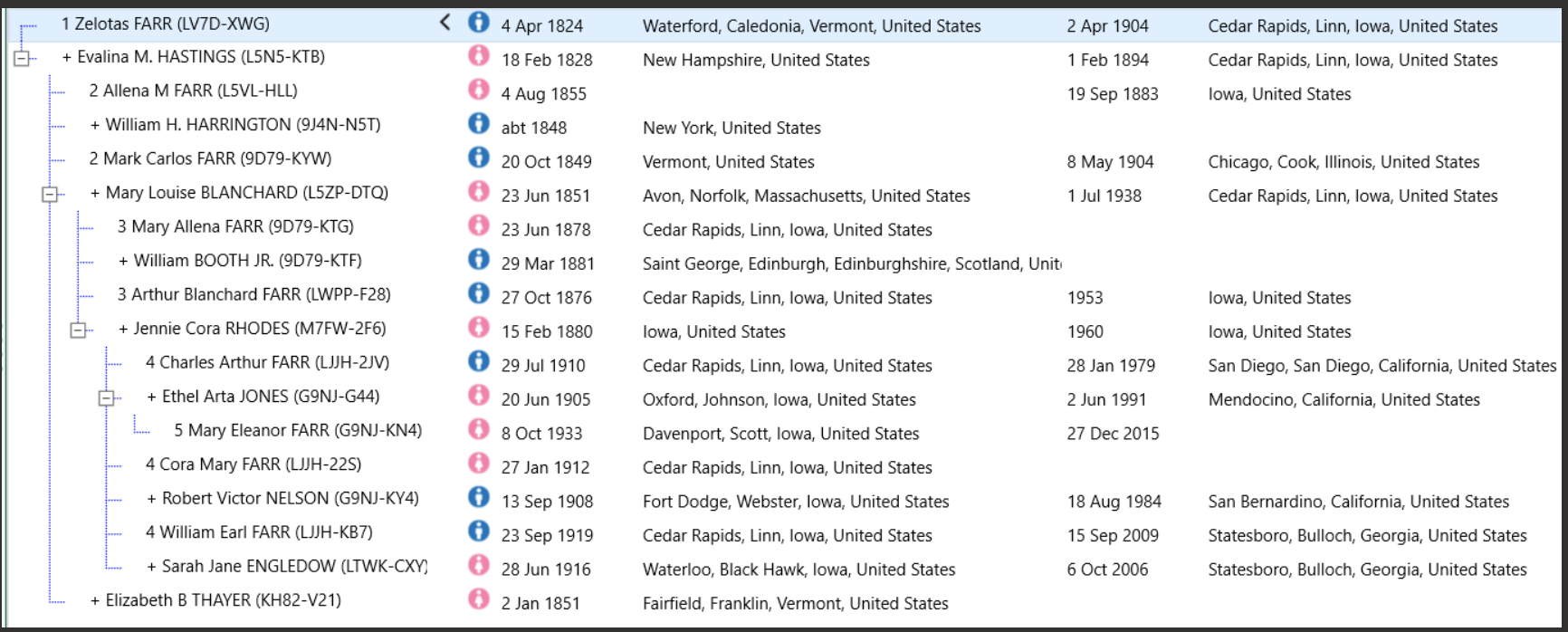
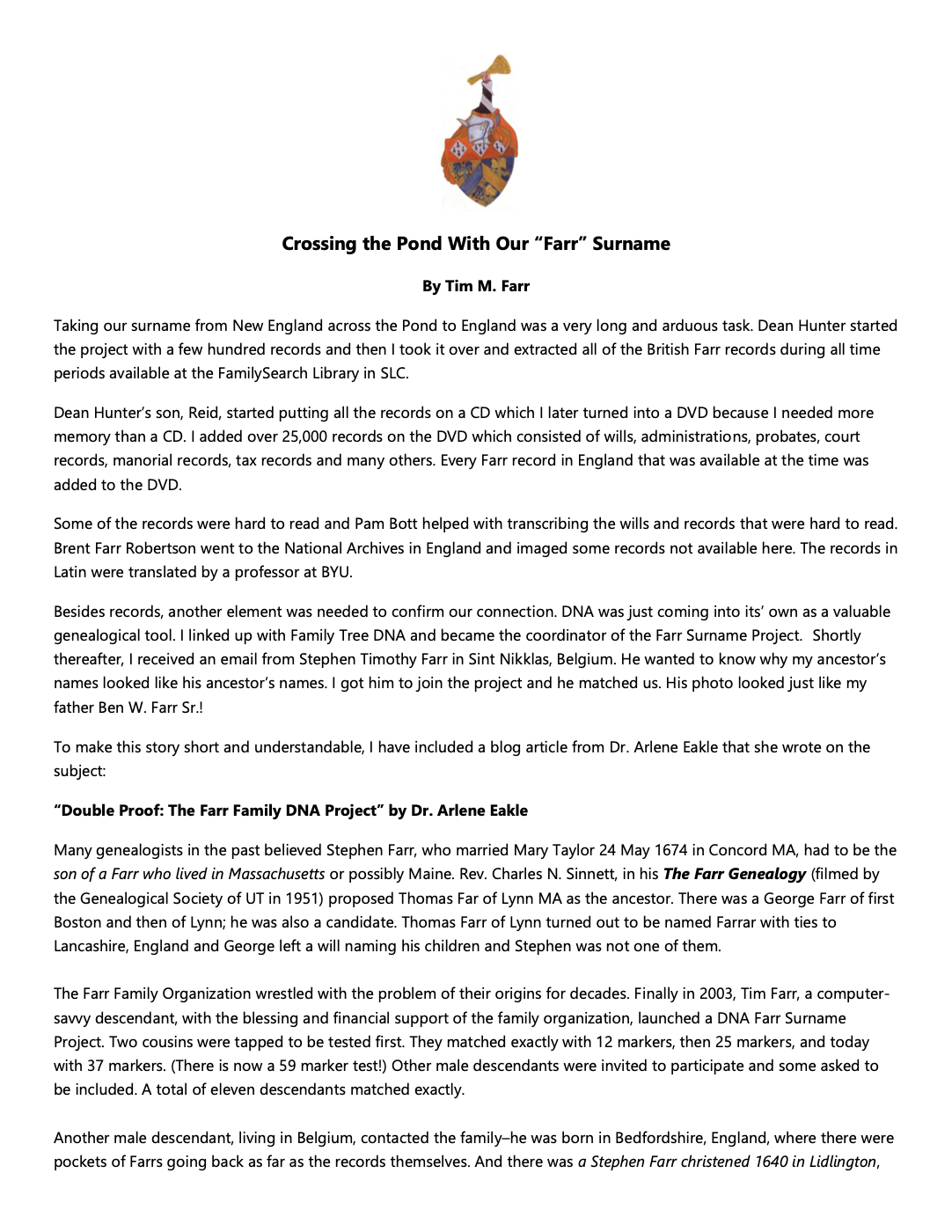

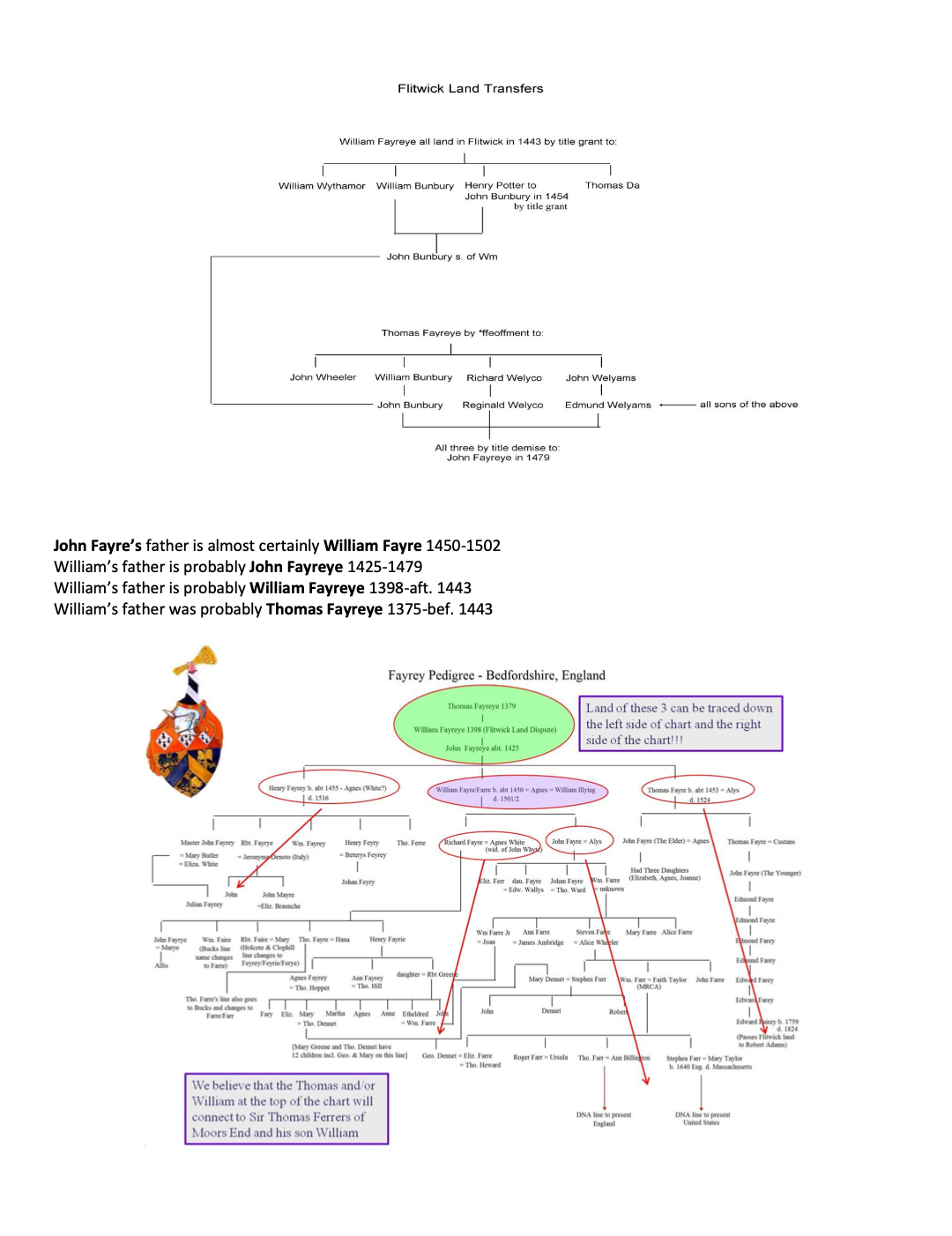
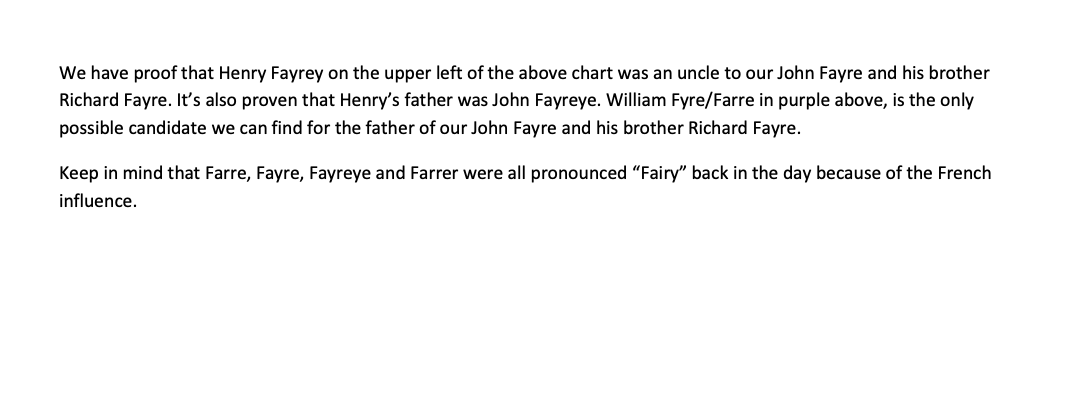
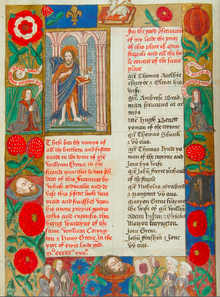
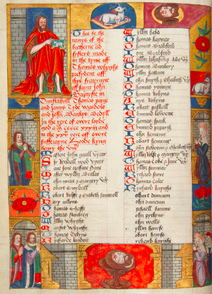
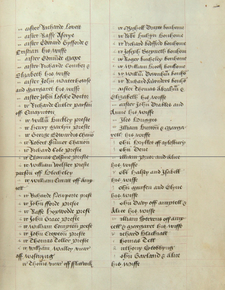
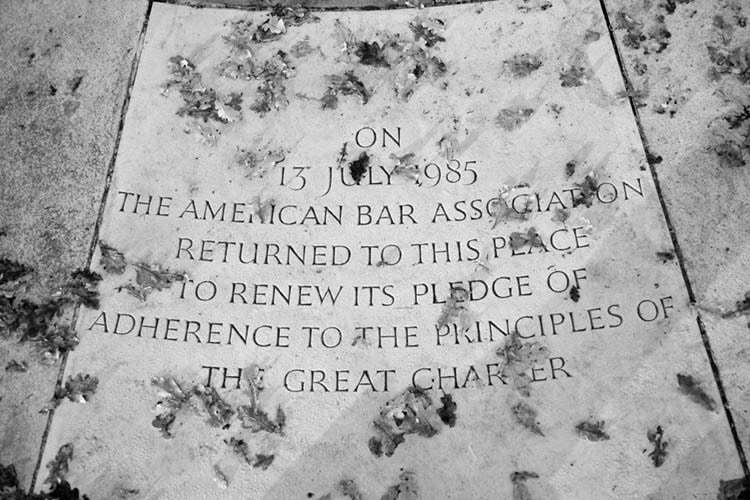
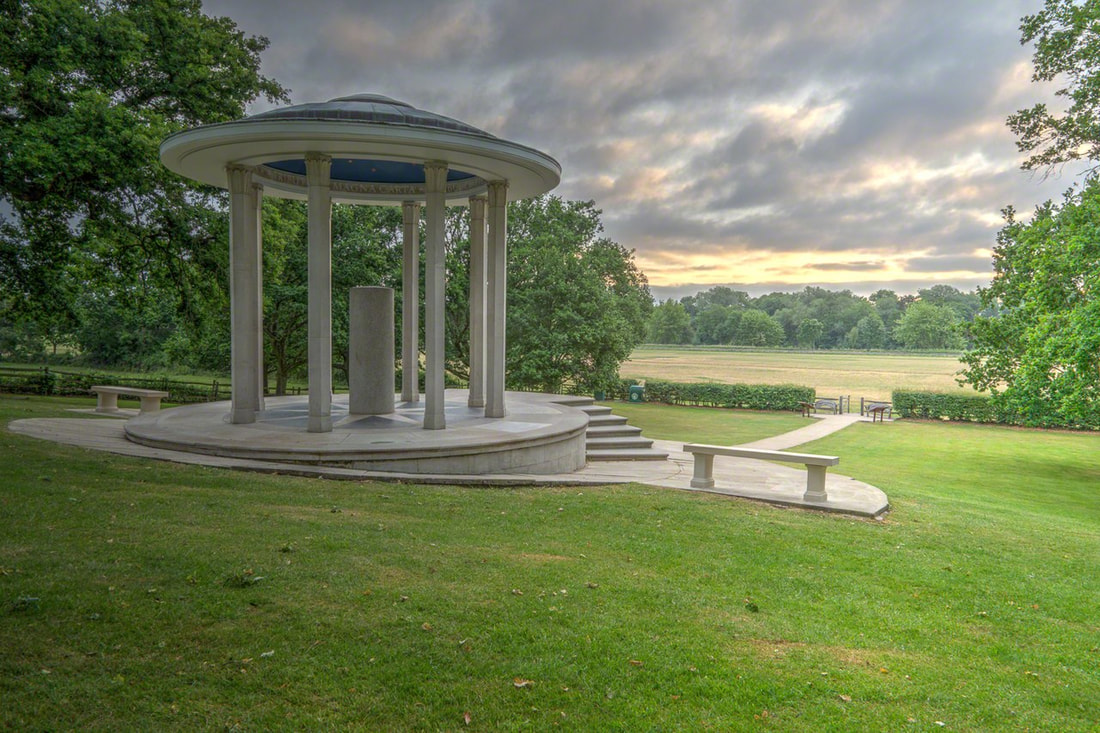
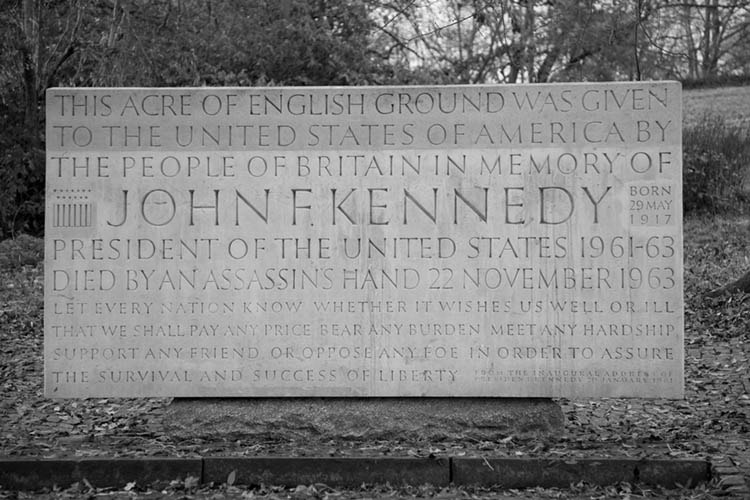
 RSS Feed
RSS Feed